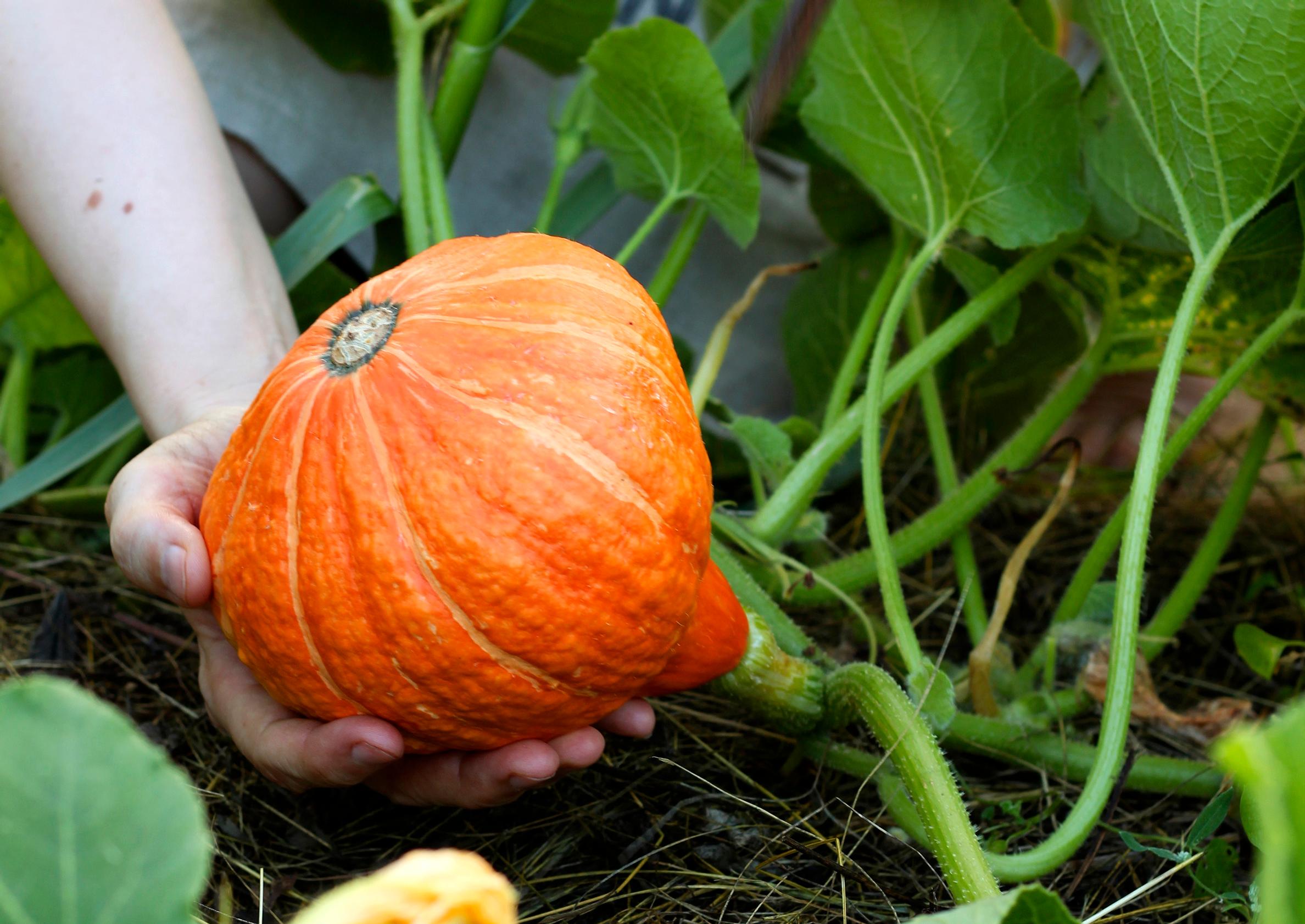
Growing pumpkins in your own garden—here’s how you’ll succeed
Pumpkins thrive with abundant warmth, space, water, and rich soil. Hard-shelled varieties can be stored for extended periods, even at room temperature.
Pumpkins fall into three main categories based on their cultivation and use: summer squash, winter squash, and giant pumpkins. Additionally, there are the late-ripening butternut and fig leaf squash, which are similar to winter squash. Summer squash are harvested young while their skin is tender, whereas other varieties are left to reach full maturity.
Growing winter or giant pumpkins offers excellent returns for modest effort. You’ll witness their remarkable growth from ping-pong ball size through tennis ball and football stages, ultimately reaching beach ball proportions. Pumpkins are easy to grow due to their disease resistance. While powdery mildew can appear in wet summers, and occasional visits from aphids and spider mites occur, these plants are generally robust. The plant needs lots of heat, but once established, it takes care of itself by shading out weeds.
Pumpkins require substantial nutrients and water. Enrich the soil generously with compost or all-purpose fertilizer at planting time. Additional fertilizer applications during summer help maintain the deep green color of the leaves.
Successful pollination determines fruit quantity. Three fruits per plant is optimal. When 4–5 fruits have developed, remove subsequent flowers. There’s no need to trim long vines. To boost fruit production, earth up some of the stems to encourage root development from leaf axils. It’s good to place supports underneath the growing pumpkins.
To prepare pumpkin for cooking, halve and peel it, and remove seeds and stringy parts. The flesh works well in soups, stews, baked goods, and jams. For oil seed varieties, the seeds can also be eaten.


How to grow pumpkin:
Growing medium
Nutrient-rich, compost-amended and moisture-retaining. pH 6–7. Apply mulch to maintain consistent soil moisture throughout the growing season.
Light and location
Choose a warm, sunny spot sheltered from wind. Traditional methods include growing on straw-covered or otherwise mulched compost. Allow approximately 1 m² for summer squash plants and 1.5–3 m² for larger varieties.
Pre-growing
For winter and giant pumpkins, start seeds in May, 3–4 weeks before outdoor planting. Sow 2 seeds in a 10 cm diameter pot, later removing the weaker seedling.
Sowing
Direct sow after spring frosts have passed. Plant seeds 1–3 cm deep. Protect with row cover until flowering begins.
Planting
Plant in mid-June or after frost risk has passed. Protect seedlings with row cover until flowering begins.
Watering
Provide consistent, generous watering, especially during fruit development. To promote strong root growth, water a wide area rather than just at the stem base. Use warm water when possible. Mulch with straw, grass clippings, black plastic, or landscape fabric.
Fertilizing
Beyond initial fertilization, apply compost soil or all-purpose fertilizer multiple times during summer. Switch to nitrogen-free, potassium-rich fertilizer in late summer.
Harvesting pumpkin
Harvest winter and giant pumpkins at full maturity. The skin should resist fingernail pressure and produce a hollow sound when tapped. Pick winter squash in August–September once the skin has hardened. Retain a 5 cm stem. Cure at room temperature for two weeks, then store at 10–13°C.
Winter squash should yield 4–6 fruits per plant, giant pumpkins 1–3.
Delicious pumpkin varieties
Winter squash
- ‘Sweet Dumpling’: Small, round fruit with light-colored skin with green patterns. Pale yellow flesh. High-yielding with sweet, mild flavor.
- ‘Herakles’: Oil seed variety with round fruit, mottled yellow and green exterior, pale yellow flesh. Hull-less seeds can be used.
Giant pumpkin
- ‘Big Max’: Oblong-round fruit with shallow grooves. Bright orange skin and flesh. Vining growth habit. Perfect for Halloween carving. Keeps for 5–10 months in cool storage.
- ‘Uchiki Kuri’ (‘Red Kuri’)’: Teardrop-shaped Japanese variety with bright orange exterior. Uniform yellow flesh with creamy sweet, nutty flavor. Excellent storage qualities.
- ‘Ungarische Blauer’: Flat-round shape with light gray exterior and deep orange flesh. Vining growth habit. Rich flavor and excellent storage qualities.
Butternut squash
- ‘Butternut Waltham’: Pear-shaped fruit with light brown exterior and orange flesh. Semi-vining habit. Aromatic and sweet flavor.
- ‘Futsu Black’: Fruit transitions from dark green to beige and finally gray, with orange flesh. Fruity flavor.


